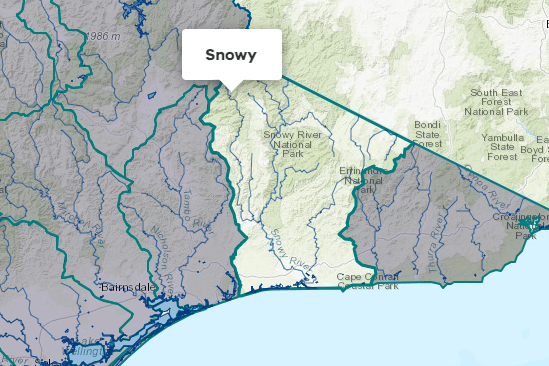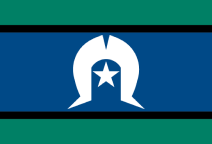About the area
- The East Gippsland basin covers the eastern-most point of Victoria. Most of the basin is mountainous and forested; there are small sections of farmland including around Cann River.
- Major waterways include the Genoa, Wingan, Cann, Bemm, Betka and Thurra Rivers.
- Average annual rainfall is between 900-1200 mm in the basin.
More information on water management and accounting is detailed in Water .
2021-22 overview
Available water
Catchment inflow was higher than the previous year.
Licensed diversion restrictions
Fewer restrictions on licensed diversions.
Water use
More water was diverted for consumptive purposes than the previous year.
When compared to the previous year, in 2021-22:
- more rainfall was received and catchment inflow was much higher
- there were fewer restrictions on licensed diversions from unregulated streams
- more water was diverted from the basin for consumptive uses.
Climate
Rainfall
In 2021-22, rainfall in the East Gippsland basin was very much above average across the entire basin, higher than the previous year.
River basin water balance
As well as very much above average rainfall, there were also much higher inflows received than the previous year – the highest volume since the 2003-2004 Victorian Water Accounts. Above average inflows of 2,844,731 ML were received (332% of the long-term average of 857,700 ML), much more than the previous year (207% of the long-term average).
In 2021-22, 801 ML of water was diverted for consumptive uses: town, domestic and stock, irrigation and commercial supply, about the same as the previous year (683 ML).
Water balance table
The table below shows the total volumes of water available and supplied from water resources in the East Gippsland basin in 2021-22.
Table 1: Water balance, East Gippsland basin
Catchment inflow
Catchment inflow represents the volume of water flowing into the waterways of a basin. It is calculated to be the difference between the total outflows and the known inflows.
Consumptive use in the basin is generally very low compared to water availability, and almost 100% of total inflows passed to Bass Strait in 2021-22.
Above average inflow
Catchment inflow was 332% of the long-term average of 857,700 ML.
Highest catchment inflow
Highest catchment inflow in the 17-year history of the Victorian Water Accounts.
Wastewater treatment plants
Water treated at wastewater treatment plants can be used to supplement water available in the basin. Water discharged to waterways from treatment plants is included as an inflow to the water balance.
Information on treatment plants is now reported in the Water Supply local reports for the water corporation responsible for managing the plant. In this basin, wastewater treatment plants are managed by East Gippsland .
Small catchment dams
Water harvested, used, and lost by small catchment dams (farm dams) is included in the water balance.
In 2021-22, net evaporation — evaporation from the dam’s surface minus direct rainfall — is negative, as rainfall was greater than evaporation.
Table 2: Small catchment dams, East Gippsland basin
Entitlements and compliance
Entitlements provide the basis for how water is shared in the basin.
Entitlement volumes
Rights to water in the East Gippsland basin are shown in table 3 below.
Entitlement volumes represent a maximum volume that can be taken in a one-year period. The volume available in a particular year is dependent on the rules for allocating water set out in the entitlement and the seasonal conditions in that year, which varies. The rules for allocating water under an entitlement can differ between entitlements and systems. This affects the ability and likelihood of water being taken in a particular year.
Table 3: Annual entitlement volumes at 30 June, East Gippsland basin
Available water and take under entitlements
Total water available under entitlements represents the volume of water that was available to be taken by entitlement holders in 2021-22. The volume includes seasonal allocations and net trade into the basin.
Water taken
There was 181 ML taken under entitlements in 2021-22, slightly less than the year before (206 ML).
Restrictions on licensed diversions from unregulated streams
There were no restrictions on licensed diversions from unregulated streams in 2021-22, the same as in the previous year.
Available water and take table
This table shows the volume of available water and the volume taken under entitlements in 2021-22.
More information on available water and take has been detailed in the How do we account for surface section on the How do we account for water page.
In 2021-22, about the same amount of water was taken under entitlements as the previous year.
Table 4: Available water and take, East Gippsland basin
Compliance
Compliance against water entitlements is reported for this basin in three areas:
- entitlement issued: the volume of entitlements issued in a basin does not exceed formal caps, and has not increased without appropriate approvals
- water taken: the volume of water taken during the year does not exceed the volume considered to be available for consumptive and/or in-stream use during that year
- bulk entitlement provisions: holders of entitlements do not breach any provisions that are documented in their bulk entitlement orders.
Total entitlement volume
There was no net increase in the total entitlement volume from the previous year.
Total volume diverted
The total volume diverted (181 ML) was within the volume available for the year (1,455 ML).
Individual bulk entitlements
No individual bulk entitlement holder took more than the annual volume made available to them.
Exceptions to compliance
Individual bulk entitlement holders complied with all provisions in their entitlements.
Water for the environment
Environmental watering sites
There are no environmental entitlements in the East Gippsland basin, so no active environmental watering occurs.
However, important sites and environmental values in the East Gippsland basin that depend on water for the environment include:
- the Bemm, Cann and Genoa rivers, which all feed into high-value wetlands
- Sydenham, Tamboon and Mallacoota inlets (all nationally significant wetlands)
- pristine estuaries, heritage river reaches and the swamp skink, Australian grayling, Australian bass, tangle orchid and eastern curlew.
Environmental water reserve
In 2021-22, water for the environment in the East Gippsland basin comprised:
- water set aside for the environment through:
- flow-sharing arrangements set out in bulk entitlements held by East Gippsland Water
- the operation of passing flow conditions on licensed diversions
- all other water in the basin not allocated for consumptive uses: this water also provides social, recreational and cultural benefits.
Management responsibilities
Management of water in the East Gippsland basin is undertaken by various parties
| Authority | Management responsibilities |
|---|---|
| Southern Rural Water |
|
| East Gippsland Water |
|
| East Gippsland Catchment Management Authority |
|
| Water supply system | 2021-22 (ML) | 2020-21 (ML) |
|---|---|---|
| Bemm River | 13 | 14 |
| Cann River | 25 | 28 |
| Mallacoota | 26 | 70 |






